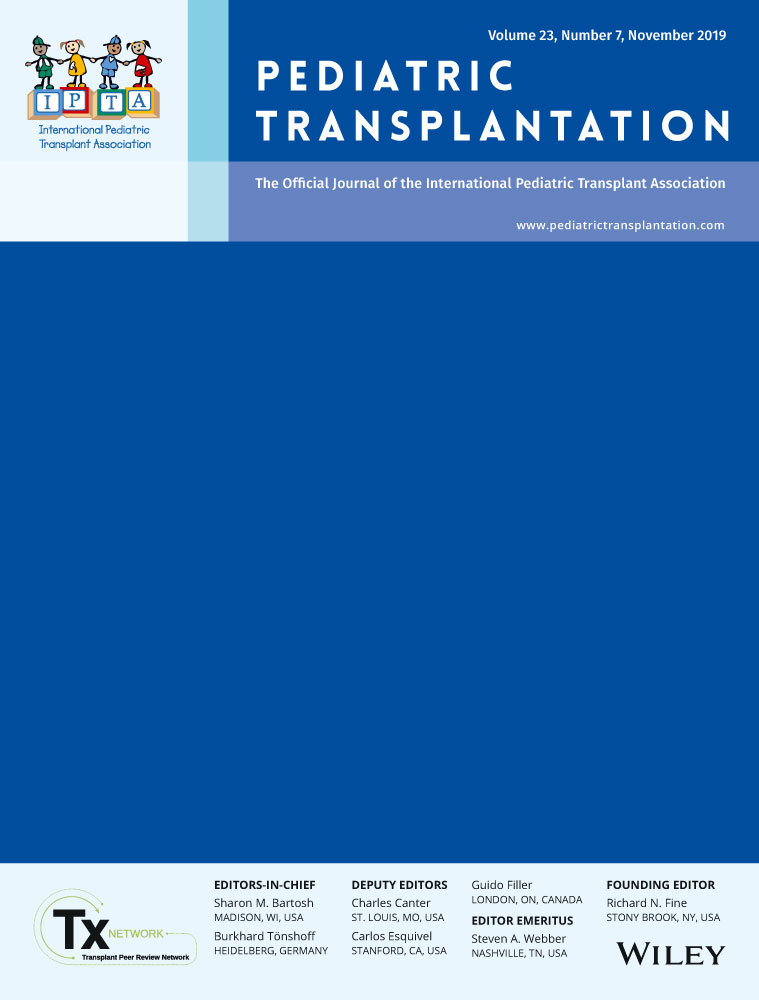EDITORIAL
Is deceased organ donation using extracorporeal membrane oxygenation transport ethical and feasible?
Joe Brierley,
Corresponding Author
Joe Brierley
Department of Paediatric Intensive Care, Great Ormond Street Hospital for Children, NHS Foundation Trust, London, UK
University College London Great Ormond Street Institute of Child Health, NIHR Great Ormond Street Hospital Biomedical Research Centre, London, UK
Correspondence
Joe Brierley, Department of Paediatric Intensive Care, Great Ormond Street Hospital for Children NHS Foundation Trust, London, UK.
Email: [email protected]
Search for more papers by this author Stephen D. Marks,
Stephen D. Marks
University College London Great Ormond Street Institute of Child Health, NIHR Great Ormond Street Hospital Biomedical Research Centre, London, UK
Department of Paediatric Nephrology, Great Ormond Street Hospital for Children, NHS Foundation Trust, London, UK
Search for more papers by this author
Joe Brierley,
Corresponding Author
Joe Brierley
Department of Paediatric Intensive Care, Great Ormond Street Hospital for Children, NHS Foundation Trust, London, UK
University College London Great Ormond Street Institute of Child Health, NIHR Great Ormond Street Hospital Biomedical Research Centre, London, UK
Correspondence
Joe Brierley, Department of Paediatric Intensive Care, Great Ormond Street Hospital for Children NHS Foundation Trust, London, UK.
Email: [email protected]
Search for more papers by this author Stephen D. Marks,
Stephen D. Marks
University College London Great Ormond Street Institute of Child Health, NIHR Great Ormond Street Hospital Biomedical Research Centre, London, UK
Department of Paediatric Nephrology, Great Ormond Street Hospital for Children, NHS Foundation Trust, London, UK
Search for more papers by this author
First published: 18 September 2019
No abstract is available for this article.
CONFLICTS OF INTEREST
The authors declare they have no conflict of interest.
REFERENCES
- 1Leblanc C, Genuini M, Deho A, et al. Successful extracorporeal membrane oxygenation transport of a 4-month old brain-dead infant for organ donation: a case report. Pediatr Transplant. 2019; 23(7): e13515.
- 2Weiss MY. The path to paediatric donation after circulatory determination of death guidelines. Paediatr Child Health. 2018; 23(1): 27-30.
- 3Araki T, Yokohota H, Ichikawa K. A survey on pediatric brain death and on organ transplantation: how did the law amendment change the awareness of pediatric healthcare providers ? Childs Nerv Syst. 2017; 33(10): 1769-1774.
- 4Mitchell E, Loomes KM, Squires RH, Goldberg D. Variability in acceptance of organ offers by pediatric transplant centers and its impact on wait-list mortality. Liver Transpl. 2018; 24(6): 803-809.
- 5Rana A, Fraser CD, Skully BB, et al. Inferior outcomes on the waiting list in low-volume pediatric heart transplant centres. Am J Transplant. 2017; 17(6): 1515-1524.
- 6McGee A, Gardiner D. Differences in the definition of brain death and their legal impact on intensive care practice. Anaesthesia. 2019; 74(5) : 569-572.
- 7Marlais M, Callaghan C, Marks SD. Kidney donation after circulatory death: current evidence and opportunities for pediatric recipients. Pediatr Nephrol. 2016; 31(7): 1039-1045.
- 8 European Directorate for the Quality of Medicines & Healthcare. Guide to the quality and safety of organs for transplantation ( 6th edn). Council of Europe; 2016. ISBN 9789287182876




